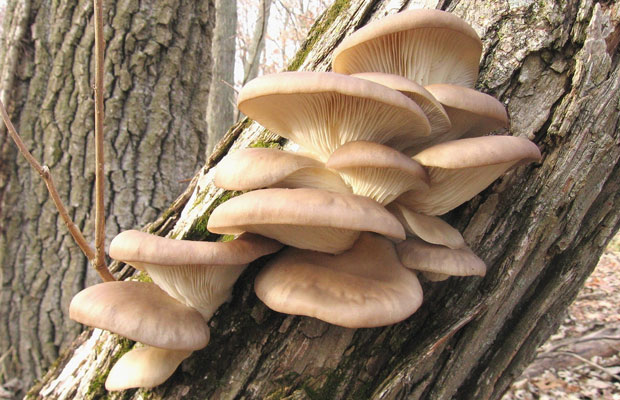Funny Medicines That Need to Be Made
10 heart drugs with weird origins
We take medicines every day – but do you think about where they come from? Most modern drugs are created in the lab – but some have unusual or downright bizarre origins, as Rick Karsan explains.
1. ACE Inhibitors

ACE inhibitors are a frequently used class of drugs in heart medicine, used to treat high blood pressure and heart failure, and often prescribed following a heart attack. One common example is ramipril.
But did you know that the active ingredient in the first ACE inhibitor, captopril, was originally derived from snake venom? Launched in 1981, captopril was based on an ingredient of the venom of the poisonous Brazilian Viper (Bothrops Jararaca).
Nobel Prize winner John Vane initially tested peptides from the venom on dog lungs, finding that they were able to block the activity of angiotensin converting enzyme, from here Vane tentatively proposed an ACE inhibitor research programme to what is now Bristol Myers Squibb. Many revisions, tests and trials later, in 1975 captopril was born.
Captopril is rarely prescribed today but is still licensed for use in high blood pressure, heart failure and even kidney disease caused by diabetes. It was the first effective oral ACE inhibitor and its legacy of subsequent developments in this drug group has helped to manage the blood pressures of millions of people.
- Read more about ACE inhibitors.
2. Aspirin

Aspirin was one of the first drugs to be commonly used, and its origins can be traced back as far back as the ancient Egyptians.
The natural compound in what we now know as aspirin is found in the bark of the willow tree, and in the meadowsweet flower. An ancient Egyptian medical text, the Ebers papyrus, mentions the use of willow as an anti-inflammatory or pain relief from aches and pains. And in Greece in 400BC, Hippocrates gave women willow leaf tea to help ease the pain of childbirth.
In 1828 at Munich University, Professor Joseph Buchner succeeded in extracting the active ingredient from willow, producing crystals that he named salicin. Testing of salicin during a clinical trial in 1876 found that it helped to reduce fever and joint inflammation in patients with rheumatism, and in 1897 it was discovered that adding an acetyl group to salicylic acid could reduce its irritant properties.
Acetylsalicyclic acid was named Aspirin in 1899 by the pharmaceutical company Bayer, and the drug began to be sold around the world.
Today aspirin is used regularly for pain relief, in particular to reduce the risk of stroke or heart attack in people considered to be at risk.
- Read more about aspirin.
3. Digoxin

Digoxin belongs to the class of drugs known as cardiac glycosides. It is primarily used to treat heart failure but may also be used in the management of certain abnormal heart rhythms, including atrial fibrillation and atrial flutter.
The active ingredient in digoxin originates from the purple foxglove (digitalis purpurea). Historically, the use of digitalis can be traced back to ancient Egypt. The English doctor William Withering is credited with the first published description of its use in 1785.
Used incorrectly, digitalis can be highly toxic, and in the case of overdose can cause nausea and vomiting, as well as abnormal heart rhythms.
- Read more about digoxin.
4. Warfarin

Warfarin, which belongs to the class of drugs called coumarins, is the most widely used anticoagulant in the world. Warfarin is used to prevent blood clots in conditions such as atrial fibrillation and rheumatic heart disease. It is also prescribed to prevent clots after the insertion of artificial heart valves.
You might already know that warfarin was developed for use as rat poison before it was used in human medicine. But did you know that it was discovered in the 1920s after previously healthy cattle in the Northern Plains of America and the prairies of Canada started dying of internal bleeding?
When no other cause was found, attention turned to the diet of the livestock. It was found that cattle were grazing on hay made from sweet clover (Melilotus alba and Melilotus officinalis).
The incidence of bleeding was found to be highest when the hay was damp and as a result became infected with the moulds Penicillium nigricans and Penicillium jensi. Normally damp hay would have been discarded but as this was during the period of the Great Depression, money was tight and frugality took precedence.
It was later found that the natural chemical coumarin, which is responsible for the smell of newly mown hay, turned into dicoumarol once it was infected with the mould. Warfarin is derived from dicoumarol.
- Read more about warfarin.
5. Nitrates (GTN)

Glyceryl trinitrate (GTN) belongs in the class of medications known as nitrates. GTN is now used to manage angina.
In fact, it is the same thing as the explosive nitroglycerin – used to make dynamite and gunpowder. The name glyceryl trinitrate was chosen by the medical community to avoid alarming patients who were aware that nitroglycerin was an explosive.
The blood vessel dilating properties for which nitrates are largely used was observed in 1847 by Abscanio Sobrero, who noticed that exposure to nitroglycerin caused headaches. This was due to expansion of blood vessels with the unintentional high dose causing the pain.
It was William Murrell who engineered the use of nitrates for angina and to reduce blood pressure.
- Read more about nitrates.
6. Statins

Statins are mainly used to lower cholesterol and to lower risk of a heart attack in people who are considered to be at risk. They are used in people who already have heart disease to stabilise fatty plaques, thereby reducing the risk of a heart attack.
The history of cholesterol-lowering medication statins can be traced back to Japan. In 1970, Japanese microbiologist Akira Endo isolated the first known compound to lower cholesterol called citirin from Penicillium citrinum.
The first compound derived from this was called mevastatin. Trials of mevastatin were found to be positive in animals at lowering cholesterol, but it was considered to be too toxic to give to humans.
In 1978 Alfred Alberts discovered lovastatin in oyster mushrooms. This formed the basis for the development of many of today's statins. It is naturally found in oyster mushrooms (Aspergillus terreus and Pleurotus ostreatus), red yeast rice and pu-erh (a type of tea).
- Read more about statins.
7. Quinidine

EOL Learning and Education Group / Via Flickr
Quinidine is an antiarrhythmic drug, used in the treatment of some heart rhythm problems, such as atrial fibrillation and paroxysmal supraventricular tachycardia (PSVT). It's also used in the treatment of atrial fibrillation in horses.
Quinidine is a derivative of quinine, which originally came from the bark of the cinchona tree. Quinine is the flavouring found in bitter lemon and tonic water.
Historically, tonic water was drunk in British India due to its antimalarial properties. The bitter taste led colonials to mix it with gin, thus giving rise to the gin and tonic.
Quinine itself is still used for the treatment of malaria, as well as muscle cramps.
8. Alteplase

Torben Schink / Via Wikimedia Commons
Alteplase is a drug used in the emergency management of heart attacks where more invasive methods, such as angioplasty or heart bypass surgery, are not available.
The drug works by breaking down the blockage in the blood vessels supplying the heart.
Alteplase belongs to the class of medications known as tissue-type plasminogen activator (t-PA). t-PAs are found in most mammalian tissue, with the first purified form obtained from human uterine tissue.
As techniques developed, genetic expression and cloning techniques were used to produce large amounts, much like insulin. Alteplase itself is now largely developed from Chinese hamster ovary cells.
9. Aprotinin

Anders Gustavson / Via Flickr
Aprotinin is a drug largely used in heart surgery to reduce bleeding in patients with the aim of reducing the need for blood transfusions.
Aprotinin is a trypsin inhibitor which prevents the breakdown of blood clots. It was independently discovered in the 1930s and initially isolated from cow parotid glands (a type of salivary glands), and later purified from cow lungs.
Initially it was used to treat pancreatitis but has been used to prevent blood loss during surgery since the 1960s.
10. Fibrates

IITA / Via Flickr
Fibrates, like statins, are used to lower cholesterol. The first fibrate, clofibrate was developed in the 1950s. It was noticed that farm workers in France who had become ill after being exposed to insecticides sprayed on fields had particularly low cholesterol levels.
Clofibrate was developed using a different chemical compound with the same properties as the insecticide and trialled on humans. It is no longer used because by the late 1970s it had been found to have negative effects which outweighed the positive effects. Still, it was the very first cholesterol lowering drug in the 1960s and preceded the development of statins.
Clofibrate also aided the development of newer fibrate medication, which are still used either in combination with a statin for high-risk patients, or to reduce high levels of triglycerides (a type of cholesterol) to prevent inflammation of the pancreas.
- See our list of 10 weird things we've been told could cause heart disease.
Source: https://www.bhf.org.uk/informationsupport/heart-matters-magazine/medical/drug-cabinet/heart-drugs-with-weird-origins
0 Response to "Funny Medicines That Need to Be Made"
Post a Comment